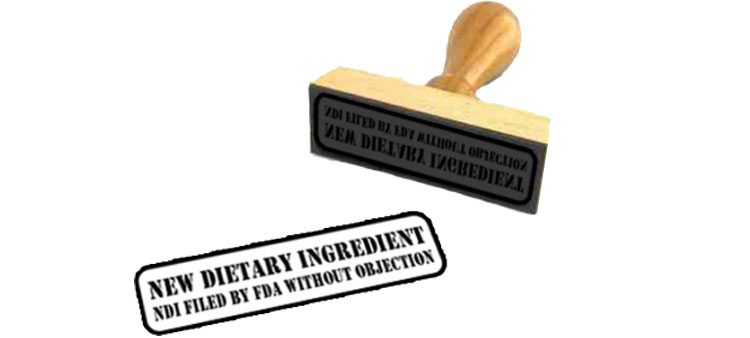New Dietary Ingredient (NDI) Guide
The United States Food and Drug Administration requires supplement manufacturers to classify certain ingredients as New Dietary Ingredients (NDI). Here’s everything you need to know about the NDI list.

What is a New Dietary Ingredient?
The Federal Food, Drug, and Cosmetic Act (known as the FD&C Act) requires that dietary supplement manufacturers classify certain ingredients as “New Dietary Ingredient”.
A new dietary ingredient is classified as an ingredient that was not marketed in the United States in a dietary supplement before October 15, 1994.
This is where things get complicated: there is no authoritative list of dietary ingredients that were marketed in dietary supplements before October 15, 1994. That’s why it’s up to supplement manufacturers and distributes to determine whether or not an ingredient needs to be classified as a new dietary ingredient.
Another important classification for new dietary ingredients is that the manufacturer of that supplement needs to consider the dietary ingredient as
“reasonably expected to be safe under the conditions of use recommended or suggested in the labeling.”
In layman’s terms, a new dietary ingredient is an ingredient that was introduced to the US market within the last 20 years and is generally expected to be safe for human consumption.
New Dietary Ingredient Classification
All nutritional supplement manufacturers need to be concerned about new dietary ingredient classification.
The FDA must be notified of a supplement containing a new dietary ingredient at least 75 days before that supplement is introduced into the marketplace. That notification requires the manufacturer to disclose information, citations to published articles, and other evidence that leads the manufacturer to conclude that the dietary supplement containing the NDI is reasonably expected to be safe to use.
Your NDI notification to the FDA must also include all of the following:
— The name of the new dietary ingredient, including the Latin name of the ingredient if the ingredient is an herb or other botanical
— A description of the dietary supplement or supplements containing the NDI, including the dosage of the ingredient in the product, the conditions of use of the product, and the history of use of the product
— The signature of a person “you designate who is responsible for the content of the notification” and can be contacted if the FDA has any questions
Any time a nutritional supplement manufacturer introduces a new dietary ingredient, they must send this information to the FDA. You can learn more about the specific requirements (and the FDA’s mailing address) here.
List of New Dietary Ingredients
The FDA has published a list of new dietary ingredients here. That list covers all major ingredients that have been introduced – or attempted to be introduced – to the United States marketplace in the last 20+ years since 1994.
The ingredients include everything from Stevia to Huperzine A to Vinpocetine.
The list also features additional information about each ingredient, including the manufacturer that filed the claim, the date on which the claim was filed, and any comments related to the filing.
Some ingredients, for example, were “filed without comment”. Other ingredients, like pokeweed mitogen (which is a mixture of proteins from the pokeweed plant), were rejected because there was an “inadequate basis for reasonable expectation of safety.”
NDI Notifications Have a Failure Rate of 88%
How hard is it to introduce a new ingredient to the American marketplace in this day and age?
To give you an idea, the FDA rejected 67 out of 76 NDI notifications in 2014, giving NDI notifications a failure rate of 88%.
That means companies have attempted to introduce certain ingredients to the US consumer market – only to get rejected towards the final stages of approval.
Many of these manufacturers continue trying to get their drugs to market undeterred. Instead of trying to add their ingredients onto the NDI list, these manufacturers often attempt to get “GRAS” certification – Generally Recognized As Safe – which is another certification standard used by the FDA.
The original NDI draft guidance issued in 2010 states that a notification for a NDI is not required if the ingredient is listed or affirmed by the FDA as GRAS, is self-affirmed as GRAS, or is approved as a direct food additive in the US.”
In other words, if your new dietary ingredient is generally recognized as safe, then you don’t need to go through NDI certification.
What Does “Generally Recognized” Mean?
Many NDI applications get rejected because of confusion over what exactly it means to be “generally recognized” as safe.
As one scientist at NutraIngredients-USA.com explains,
“It means there is a consensus in the scientific community that the ingredient is safe. For that, the data you bring forward has to be public so that this consensus might reasonably develop.”
What’s the difference between being “self-affirmed” GRAS and “FDA no objection” GRAS?
Self-affirmed GRAS is where a company convenes a panel of experts to assess the safety of a particular ingredient.
FDA no objection GRAS involves submitting a dossier to the FDA, after which they determine that the ingredient is safe to use.
As the same scientist interviewed above explains,
“When you self affirm and you don’t send it into the agency you are betting that if the agency asked to see your material they would agree with you. You are not established the agency’s position on it, you are establishing your own position on it.”
Self-affirmed GRAS status is a popular way to attempt to get around new dietary ingredient (NDI) approval.
Ultimately, companies that do their due diligence with ingredients research will find that self-affirmed GRAS is a valid way to get their ingredients to the US market.
If the FDA can look at your data and reasonably conclude that the ingredient is safe, then you should have no problem achieving self-affirmed GRAS status. Of course, if your ingredient is legitimately recognized as safe, then you wouldn’t need to work around the NDI approval process in the first place.








